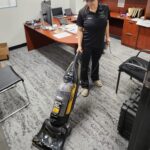Ensuring the quality of your medical equipment supplies is a cornerstone of delivering dependable, accurate, and safe healthcare in any hospital, diagnostic center, or clinic. Medical equipment directly impacts patient outcomes, staff confidence, and your facility’s operational stability. A single equipment malfunction can lead to treatment delays, diagnostic inaccuracies, and serious safety risks for patients, while also increasing repair costs and disrupting workflow. Maintaining high standards in your medical equipment is not merely a technical requirement but a commitment to patient trust and the credibility of your healthcare facility.
By proactively managing your medical equipment quality, you also safeguard your compliance with healthcare regulations and accreditation standards, ensuring smooth audits and building your facility’s reputation for reliable care. A consistent focus on equipment quality allows your team to focus on patient care rather than operational issues, improving efficiency and reducing the long-term costs associated with frequent repairs or premature replacements. Below are ten clear, actionable methods to help your facility systematically maintain high standards in your medical equipment supplies, supporting consistent, high-quality patient care every day.
1. Establish Clear Equipment Specifications
Begin by clearly defining the specifications for each type of medical equipment your facility needs. This includes technical features, safety standards, certifications, and capacity requirements. A clear specification list helps avoid purchasing unsuitable or substandard devices.
2. Inspect Equipment on Arrival
Every time you receive new equipment, conduct a thorough inspection before accepting it into your inventory. Check for visible damage, ensure all accessories and documentation are included, and verify that the device functions correctly according to the supplier’s specifications.
3. Verify Certifications and Quality Standards
Ensure all equipment meets recognized safety and performance standards such as ISO, CE, or BIS certifications. Certification indicates the equipment has undergone rigorous testing, which is essential for maintaining safety and accuracy in patient care.
4. Calibrate Equipment Regularly
Calibration is essential to maintaining accuracy, especially for diagnostic and monitoring devices. Establish a routine calibration schedule following manufacturer guidelines to ensure your equipment provides consistent, reliable results during patient care.
5. Implement Preventive Maintenance
Routine preventive maintenance is necessary to keep medical equipment functioning optimally. Develop a maintenance schedule for each device, ensuring regular checks, cleaning, and part replacements as required to extend equipment lifespan and prevent unexpected failures.
6. Train Staff on Proper Usage
Even the best equipment can fail if misused. Train your staff thoroughly on the correct usage, cleaning procedures, and basic troubleshooting of each device. This reduces misuse, helps in early detection of issues, and ensures patient safety during equipment use.
7. Maintain Accurate Service Records
Document all maintenance, calibration, and repairs for each piece of equipment. Accurate records allow you to track device performance, identify recurring issues, and plan for timely servicing or replacements, ensuring consistent equipment quality.
8. Conduct Regular Equipment Audits
Periodic audits of your equipment inventory help identify devices that may require servicing or replacement. Audits also ensure that all devices are functioning as intended and that expired or outdated equipment is safely removed from use.
9. Use Genuine Spare Parts
When repairs are necessary, always use genuine spare parts recommended by the manufacturer. Using non-standard or low-quality replacement parts may affect the device’s performance and void warranties, compromising patient safety and equipment reliability.
10. Partner with Trusted Medical Equipment Suppliers and Distributors
One of the most effective ways to ensure consistent equipment quality is by sourcing from trusted medical equipment suppliers and distributors. Reputable suppliers prioritize quality, provide certified products, and offer reliable after-sales support, including training and maintenance services. Building a relationship with a trusted supplier reduces the risks associated with low-quality purchases, supports regulatory compliance, and ensures your facility always has access to reliable equipment when needed.
Conclusion
Ensuring the quality of your medical equipment supplies is not a one-time task but an ongoing commitment that protects your patients, supports your staff, and maintains the integrity of your healthcare services. By applying these ten methods systematically, your hospital or clinic can confidently maintain high equipment standards, reduce downtime, and deliver safe, effective care every day.
- Top 10 Ways to Ensure the Quality of Your Medical Equipment Supplies
- Ensuring the quality of your medical equipment supplies is not a one-time task but an ongoing commitment that protects your patients, supports your staff, and maintains the integrity of your healthcare services.
- Medical Equipment Supplies, Medical Equipment Supplies, healthcare, medical
Related posts:
 Why You Need a Fully Automatic Water Level Controller for Your Submersible Pump
Why You Need a Fully Automatic Water Level Controller for Your Submersible Pump
 How to Clean Your Home Like a Professional Without the Hassle
How to Clean Your Home Like a Professional Without the Hassle
 Future-Proof Your Travel Agency with Jaimru CRM: Features, Benefits & Real Results
Future-Proof Your Travel Agency with Jaimru CRM: Features, Benefits & Real Results
 Enroll In The Best Stock Market Course At ICFM And Learn Real Trading Strategies Today
Enroll In The Best Stock Market Course At ICFM And Learn Real Trading Strategies Today







